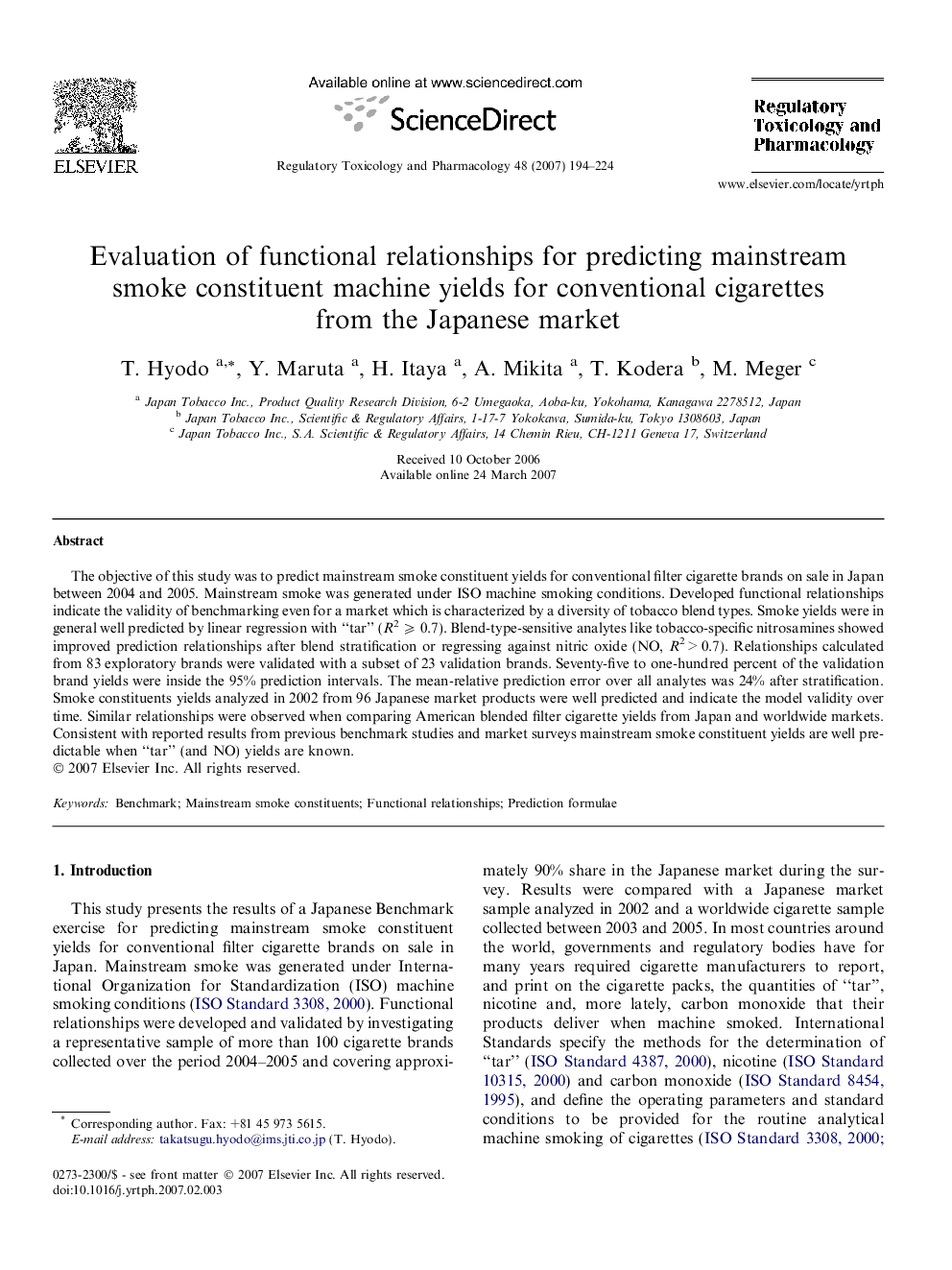| Article ID | Journal | Published Year | Pages | File Type |
|---|---|---|---|---|
| 2592832 | Regulatory Toxicology and Pharmacology | 2007 | 31 Pages |
The objective of this study was to predict mainstream smoke constituent yields for conventional filter cigarette brands on sale in Japan between 2004 and 2005. Mainstream smoke was generated under ISO machine smoking conditions. Developed functional relationships indicate the validity of benchmarking even for a market which is characterized by a diversity of tobacco blend types. Smoke yields were in general well predicted by linear regression with “tar” (R2 ⩾ 0.7). Blend-type-sensitive analytes like tobacco-specific nitrosamines showed improved prediction relationships after blend stratification or regressing against nitric oxide (NO, R2 > 0.7). Relationships calculated from 83 exploratory brands were validated with a subset of 23 validation brands. Seventy-five to one-hundred percent of the validation brand yields were inside the 95% prediction intervals. The mean-relative prediction error over all analytes was 24% after stratification. Smoke constituents yields analyzed in 2002 from 96 Japanese market products were well predicted and indicate the model validity over time. Similar relationships were observed when comparing American blended filter cigarette yields from Japan and worldwide markets. Consistent with reported results from previous benchmark studies and market surveys mainstream smoke constituent yields are well predictable when “tar” (and NO) yields are known.
